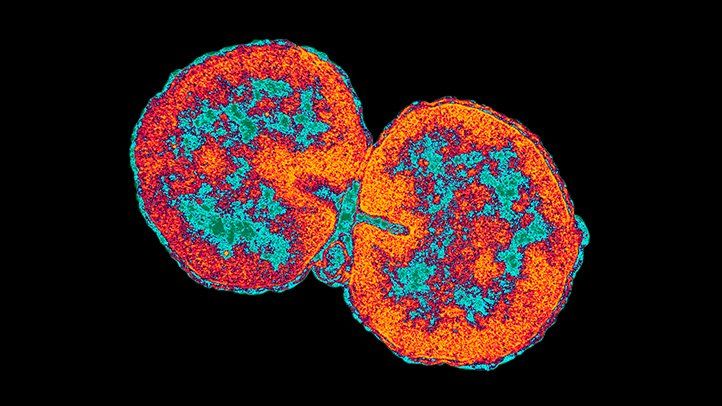The disease is caused by the gonorrhea bacteria Neisseria gonorrhoeae, and is sometimes called “the clap” — for reasons unknown — or “the drip,” because of the vaginal, penile, or rectal discharge it can cause.
Causes and Risk Factors of Gonorrhea
- Being a sexually active female under 25
- Being a man who has sex with men
- Having a new sex partner
- Having multiple sex partners or having sex with someone who has multiple sex partners
- Not using condoms consistently or correctly
- Having a history of gonorrhea or another sexually transmitted disease
Prognosis of Gonorrhea
Treatment and Medication Options for Gonorrhea


For First Time, Standard Antibiotic Regimen Fails to Cure a Case of Gonorrhea
Medication Options
You should not have sex for seven days after treatment, and you should refrain from having sex with partners who have not been treated for gonorrhea until after they have been tested and, if necessary, treated.
Alternative and Complementary Therapies
Gonorrhea is curable with antibiotics, provided the medications are taken as prescribed; there aren’t any alternative therapies that have been proven to cure the disease.
While the Listerine study raises intriguing possibilities, it does not prove that Listerine cures gonorrhea. People who test positive for gonorrhea should still be treated with antibiotics. In addition, Listerine is not intended to be used in body cavities other than the mouth.
Prevention of Gonorrhea
The only way to absolutely keep yourself safe from catching gonorrhea is to avoid having vaginal, anal, or oral sex. However, since many people wish to have sex at some point in their lives, that may be unrealistic.
- Using a condom during vaginal or anal sex
- Using a condom (for men) or a dental dam (for women) during oral sex
- Thoroughly washing sex toys — or changing the condom on them — before a new person uses them
- Not having sex with anyone until you’ve finished your treatment (if you are currently being treated for gonorrhea)
Also, having sex with fewer partners can help reduce your chances of getting gonorrhea.
Preventing Gonorrhea in Infants
Research and Statistics: How Many People Have Gonorrhea?
The number of reported cases of gonorrhea can depend on many factors that go beyond the actual occurrence of the infection, including things like differences in screening practices in different locations or the use of different kinds of tests. Nonetheless, reported cases can still be a useful way to track the disease and identify areas where the infection is on the rise or in decline.
Related Conditions
STDs: What Are They and How Do You Get Them?
Chlamydia Causes Similar Symptoms
HIV Risk Rises With Untreated Gonorrhea
Resources We Love
If you are sexually active, whether or not you have gonorrhea, it’s important to educate yourself about safe sex and STDs. Take some time to learn how to practice safe sex, how often you should get tested for STDs and other genital infections, and familiarize yourself with what’s normal for your body. Here are some resources to get you started.
American Sexual Health Association (ASHA)
This website offers straightforward information about sex and sexually transmitted diseases, including gonorrhea.
Clinical Trials
Browsing the ClinicalTrials.gov site is one way to stay up to date with the latest research on diagnosing, treating, and preventing gonorrhea.
Planned Parenthood
This organization provides information about signs, symptoms, prevention, and treatment of gonorrhea. Many Planned Parenthood locations also offer tests for gonorrhea; you can find a health center near you on the Planned Parenthood website.
Learn More About Sexuality and STD Resources
Additional reporting by Becky Upham.
Editorial Sources and Fact-Checking
- Gonorrhea — CDC Fact Sheet (Detailed Version). Centers for Disease Control and Prevention. November 5, 2019.
- Sexually Transmitted Disease Surveillance 2018. Centers for Disease Control and Prevention). July 30, 2019.
- What Are the Symptoms of Gonorrhea? Planned Parenthood.
- Mayo Clinic. December 6, 2019.
- Gonorrhea — CDC Fact Sheet. Centers for Disease Control and Prevention. January 29, 2014.
- Harvard Health Publishing. February 2019.
- STD Awareness: Will STDs Go Away on Their Own? Planned Parenthood. April 25, 2016.
- Gonorrhea Treatment and Care. Centers for Disease Control and Prevention. November 5, 2019.
- Chow EP, Howden BP, Walker S, et al. Antiseptic Mouthwash Against Pharyngeal Neisseria Gonorrhoeae: A Randomised Controlled Trial and an In Vitro Study. Sexually Transmitted Infections. February 2017.
- How Do I Prevent Gonorrhea? Planned Parenthood.
- Complications From Gonorrhea. Stanford Health Care.
- Gonorrhea. Merck Manual Professional Version. July 2019.
- Gonorrhea in Pregnancy. American Pregnancy Association. August 8, 2017.
- Sexually Transmitted Disease Surveillance 2018: STDs in Racial and Ethnic Minorities. Centers for Disease Control and Prevention. July 30, 2019.
- Owusu-Edusel Jr. L, Chessen HW, Leitchliter JS, et al. The Association Between Racial Disparity in Income and Reported Sexually Transmitted Infections. American Journal of Public Health. May 2013.
- Chlamydia and Gonorrhea. American College of Nurses-Midwives. 2013.
- STDs and HIV — CDC Fact Sheet. Centers for Disease Control and Prevention. March 30, 2020.
- 2020 STD Prevention Conference. Centers for Disease Control and Prevention. September 14, 2020.
- What Is Gonococcal Arthritis? These Are the Signs You Could Have It. CreakyJoints.org. April 9, 2019.
- Hoffman J. People Are Still Having Sex. So Why Are S.T.D. Rates Dropping? The New York Times. October 28, 2020.
- Gonorrhea Testing. LabTestsOnline. November 12, 2020.
- Screening Recommendations and Considerations Referenced in Treatment Guidelines and Original Sources. Centers for Disease Control and Prevention. June 4, 2015.
- Gonorrhea: Diagnosis and Treatment. Mayo Clinic. December 6, 2019.
- Antibiotic-Resistant Gonorrhea. Centers for Disease Control and Prevention. December 18, 2020.
- Gonococcal Infections. Centers for Disease Control and Prevention. December 18, 2020.
- Update to CDC's Treatment Guidelines for Gonococcal Infection, 2020. Morbidity and Mortality Weekly Report. December 2020.













































